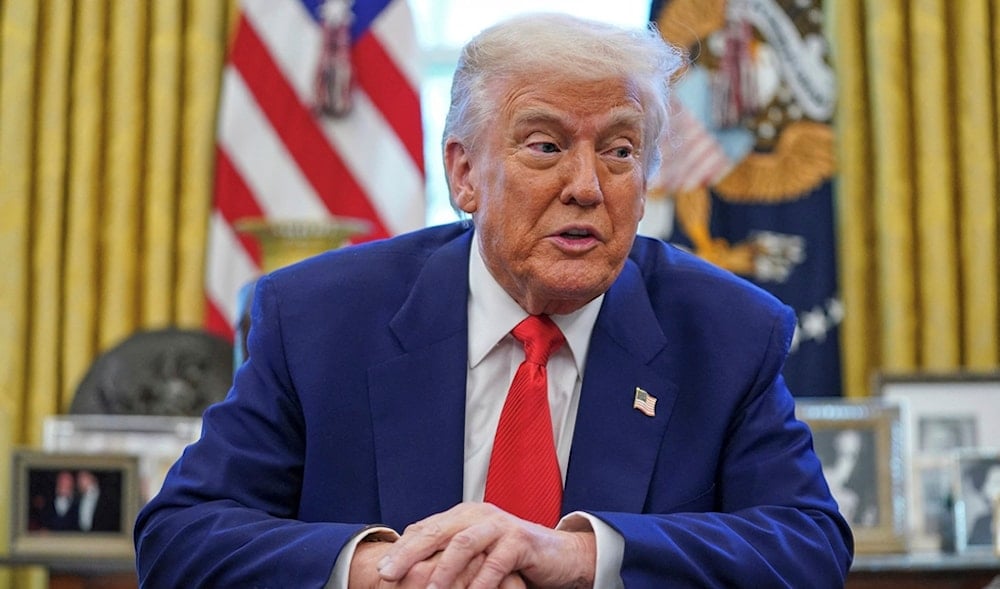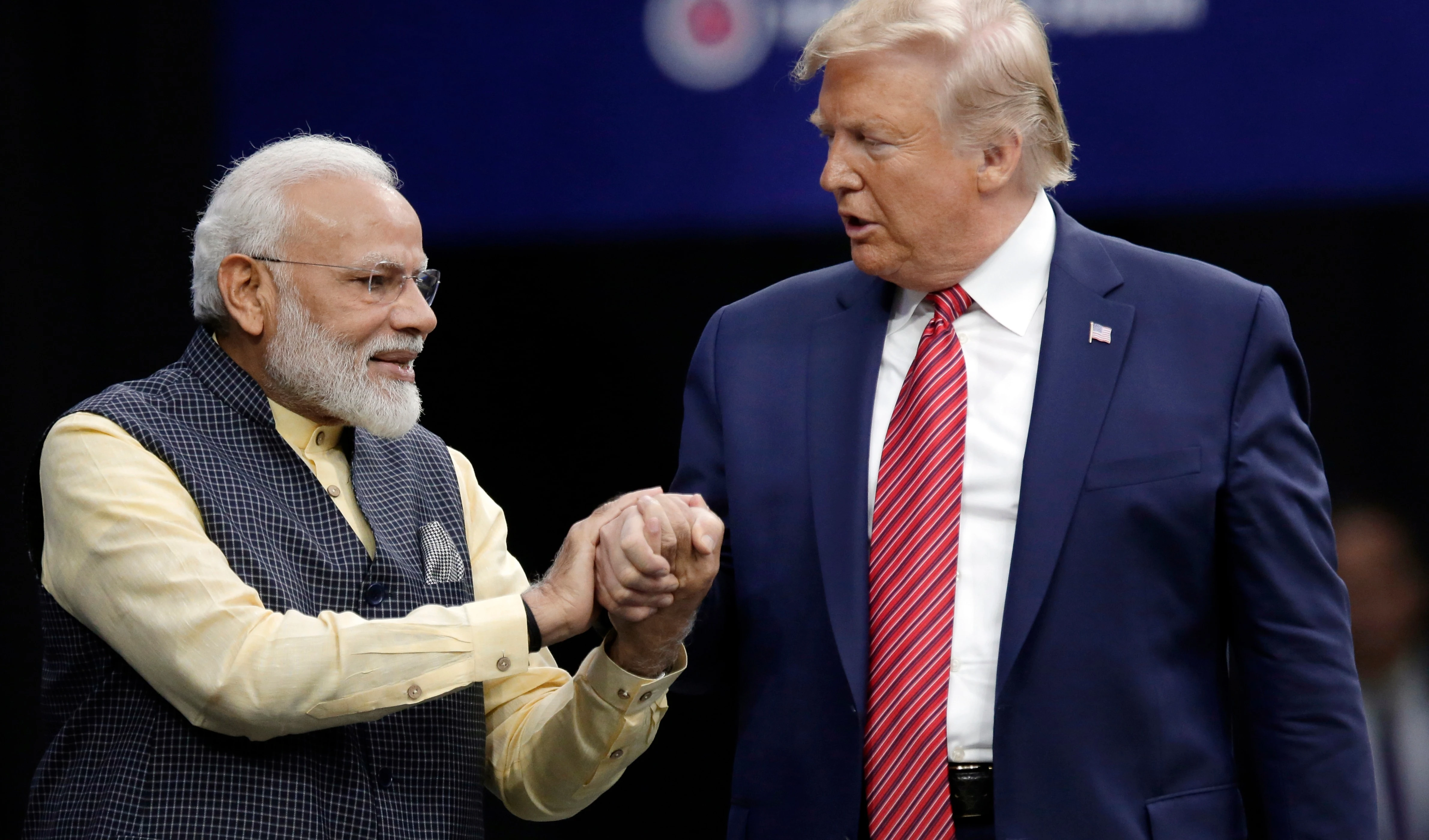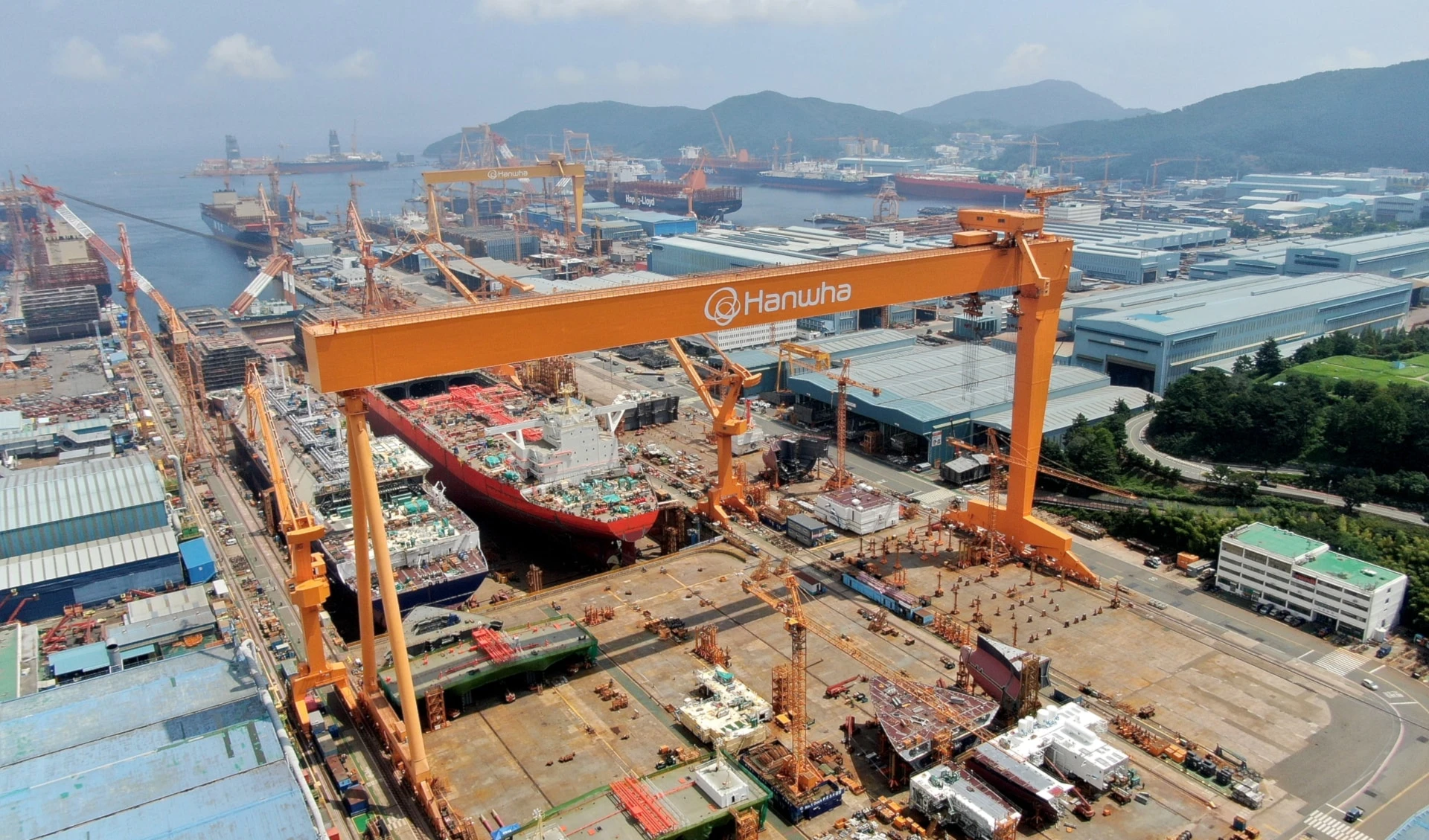Trump pauses tariffs for most nations, escalates trade war with China
Trump has authorized a 90-day pause on higher tariffs for most impacted nations but exempted China from the decision.
-

President Donald Trump speaks as he signs executive orders in the Oval Office of the White House, on Wednesday, April 9, 2025, in Washington. (AP)
US President Donald Trump abruptly paused planned tariff hikes on most countries on Thursday, igniting a wave of optimism in global markets.
However, the move came with a sharp escalation in tensions with China, as Trump increased tariffs on Chinese imports to 125%, citing a "lack of respect" from Beijing. The move followed Beijing’s decision to retaliate against previous US tariffs by imposing an additional 50% duty on American goods.
Markets across the globe surged following Trump's announcement, with Wall Street rebounding sharply after days of volatility and Asian markets following suit, uplifted by the news that nearly all countries would be spared additional tariffs for 90 days.
However, the relief was short-lived in some quarters, as China swiftly retaliated with 84% tariffs on US goods, effective from 12:01 pm Thursday. The tit-for-tat measures mark the latest flashpoint in the deepening standoff between the world's two largest economies.
Trump, speaking to reporters, dismissed claims that he had backtracked on his tough trade stance. “You have to be flexible,” he said. “People were jumping a little bit out of line, they were getting yippy, a little bit afraid.”
The president added that he was closely monitoring US bond markets before making his decision. “I saw last night where people were getting a little queasy,” he said, referring to rising bond yields amid a broader stock sell-off, a signal of investor anxiety during times of uncertainty.
Despite the clash with Beijing, Trump expressed confidence that agreements would eventually be reached. “A deal’s going to be made with China. A deal’s going to be made with every one of them,” he said, although he added that Chinese leaders “don’t quite know how to go about it.”
On the possibility of further tariff hikes on China, Trump remarked, “I can’t imagine” raising them any higher than their current level.
A volatile week for global trade
The dramatic developments follow a tumultuous week that began with Trump announcing sweeping tariffs on what he dubbed “Liberation Day.”
A baseline 10% tariff on all countries went into effect Saturday, with significantly higher rates targeting key trading partners like China and the European Union, effective Wednesday.
In a surprise post on his Truth Social platform late Wednesday, Trump revealed he had “authorized a 90-day PAUSE” on the higher tariffs, though the baseline 10% would remain in place. He said the decision was prompted by outreach from over 75 countries, many of which refrained from retaliating.
Japan, which had faced a 24% levy under the so-called reciprocal tariff regime, welcomed the pause but "strongly" urged Washington to reconsider duties on its steel and automobile exports.
The European Union, meanwhile, had already announced retaliatory steps targeting US products, including soybeans, motorcycles, and cosmetics, valued at over 20 billion euros. These countermeasures are expected to take effect next week.
However, the EU notably refrained from responding to the separate tariffs of 20% that were implemented on Wednesday.
As the trade landscape continues to shift, markets and governments alike are bracing for further developments, with the US-China economic clash showing no signs of abating.
Read more: Fed warns tariffs on China may raise inflation, slow US growth

 3 Min Read
3 Min Read










